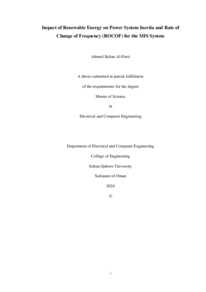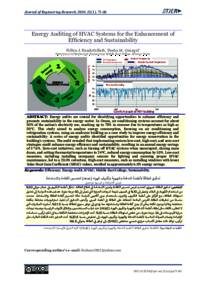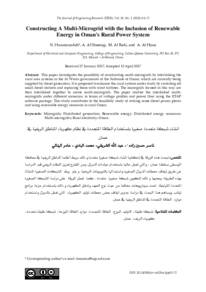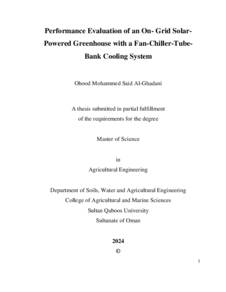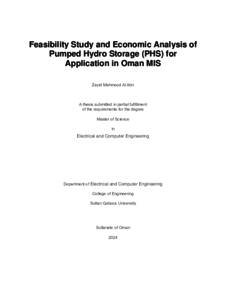وثيقة
Impact of renewable energy on power system inertia and rate of change of frequency (ROCOF) for the MIS system.
المصدر
Master's thesis
عناوين أخرى
تأثير مصادر الطاقة المتجددة على القصور الذاتي لنظام الطاقة ومعدل تغير التردد للشبكة الرئيسية المرتبطة
الدولة
Oman
مكان النشر
Muscat
الناشر
Sultan Qaboos University
ميلادي
2024
اللغة
الأنجليزية
نوع الرسالة الجامعية
Master's thesis
الملخص الإنجليزي
The current trend in power system evolution involves the extensive integration of
Renewable Energy Sources (RESs) to address the environmental concerns associated
with traditional power plants. Consequently, the capacity of RESs and Distributed
Generators (DGs) is rapidly expanding worldwide, with even higher levels of
penetration planned for the next two decades. While this increased incorporation of
RESs and DGs is beneficial for renewable energy utilization, it poses challenges to
power system stability, especially regarding frequency stability. The lack of inertia in
power electronics interfaces (such as converters/inverters) means that the rising
penetration of RESs and DGs will further diminish system inertia and impact the
system's damping characteristics. Therefore, the growing presence of RESs not only
negatively affects power system stability but also creates new challenges in
maintaining power system frequency stability.
The Sultanate of Oman's government is focused on harnessing renewable energy for
electricity generation to lower carbon emissions and decrease reliance on fossil fuels.
The goal is to achieve 20% of electricity production from renewable energy sources
by 2030 [1]. The employment of inverter-based renewable energy generators impacts
the inertia and the rate of change of frequency (ROCOF) in the main interconnected
system (MIS). To support the Sultanate's vision of increasing reliance on renewable
energy sources as per the plans in this regard, this Thesis focuses on studying the
application of the virtual inertia concept to the MIS to maintain system frequency
stability and facilitate the future implementation of renewable energy projects while
ensuring network stability. The impact of the increased penetration of renewable
energy sources on the inertia level of the MIS was studied using the DIgSILENT
software. Additionally, a virtual inertia control system based on advanced algorithms
(Type 2 fuzzy-PID controller) was developed and tested on MIS model using
MATLAB/Simulink software. The efficiency of the developed controller was verified
through several tests that included scenarios with high penetration of renewable energy
sources.
الملخص العربي
يتضمن الاتجاه الحالي في تطوير نظام الطاقة دمجا واسع النطاق لمصادر الطاقة المتجددة لمعالجة المخاوف البيئية المرتبطة بمحطات الطاقة التقليدية. ونتيجة لذلك، تتوسع سعة مصادر الطاقة المتجددة والمولدات الموزعة (DGs (بسرعة كبيرة على مستوى العالم، مع خطط لمستويات أعلى من الطاقة المتجددة خلال العقدين المقبلين. وبينما يعد هذا الدمج المتزايد مفي ًدا الستخدام الطاقة المتجددة، الا أنه يطرح تحديات الستقرار نظام الطاقة، خاصة فيما يتعلق بالاستقرار الترددي. وبالتالي، فإن الانتشار المتزايد لـ مصادر الطاقة المتجددة لا يؤثر سلبًا على استقرارية نظام الطاقة فحسب، بل يخلق أيضا تحديات جديدة في الحفاظ على استقرارية تردد نظام الطاقة. تركز حكومة سلطنة عمان في الوقت الحالي على استغلال الطاقة المتجددة لتوليد الكهرباء لتقليل الانبعاثات الكربونية وتقليل الاعتماد على الوقود الاحفوري. وتهدف الى تحقيق ما نسبته %20 من إنتاج الكهرباء من مصادر الطاقة المتجددة بحلول عام 2030 حسب رؤية عمان .2040 الا ان استخدام مولدات الطاقة المتجددة المستندة إلى العواكس الالكترونية )base-Inverter )تؤثر على مستوى القصور الذاتي ومعدل تغير التردد (ROCOF(في النظام الرئيسي المترابط (MIS(. ولدعم توجه الحكومة بالسلطنة في تحقيق رؤيتها في هذا الاعتماد على مصادر الطاقة المتجددة وفقً الموضوعة في هذا الصدد، تركز هذه الاطروحة الجانب ورفع ا للخطط على دراسة تطبيق مفهوم القصور الافتراضي على نظام (MIS (للحفاظ على استقرارية تردد النظام وتسهيل تنفيذ مشاريع الطاقة المتجددة المستقبلية مع ضمان استقرار الشبكة. تمت دراسة تأثير ارتفاع نفاذية مصادر الطاقة المتجددة على مستوى القصور الذاتي في نظام (MIS (باستخدام برنامج )DIgSILENT ) بالاضافة إلى ذلك، تم تطوير واختبار نظام التحكم بالقصور الذاتي الافتراضي القائم على خوارزميات متقدمة ) Type PID-Fuzzy 2 )على نموذج شبكة )MIS )باستخدام برنامج )Simulink/MATLAB). وتم التحقق من كفاءة المتحكم المطور من خلال عدة اختبارات شملت على توصيل مصادر الطاقة المتجددة بنسبة عالية بالنظام.
قالب العنصر
الرسائل والأطروحات الجامعية

